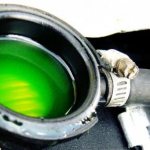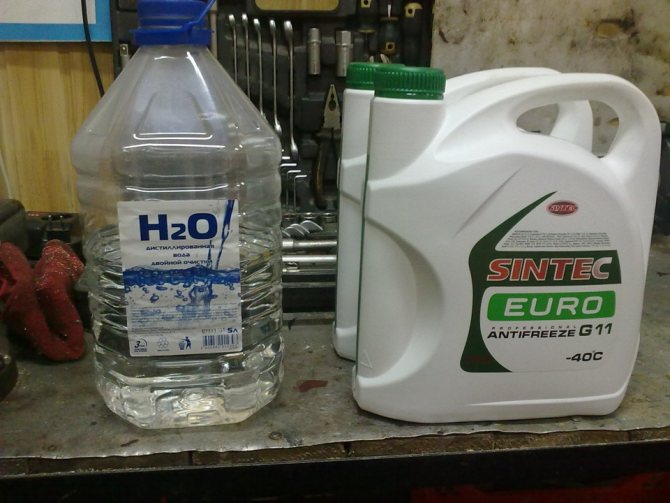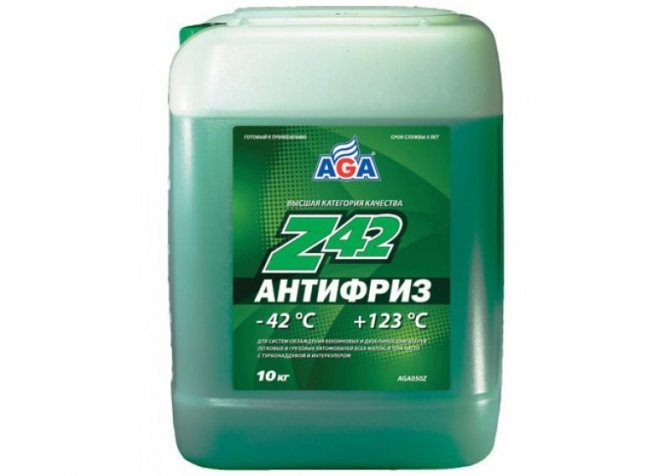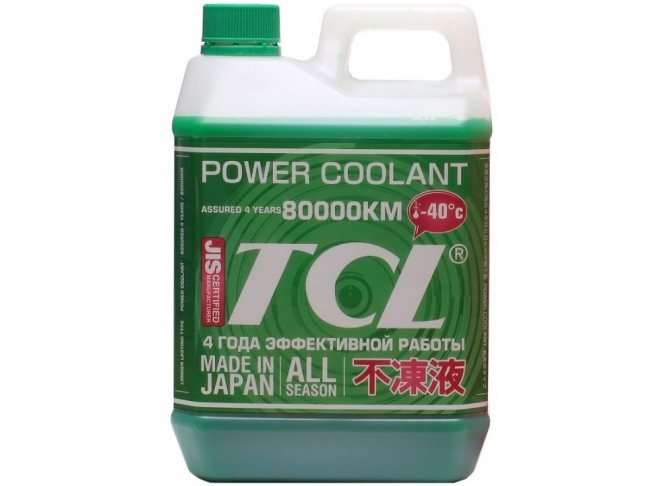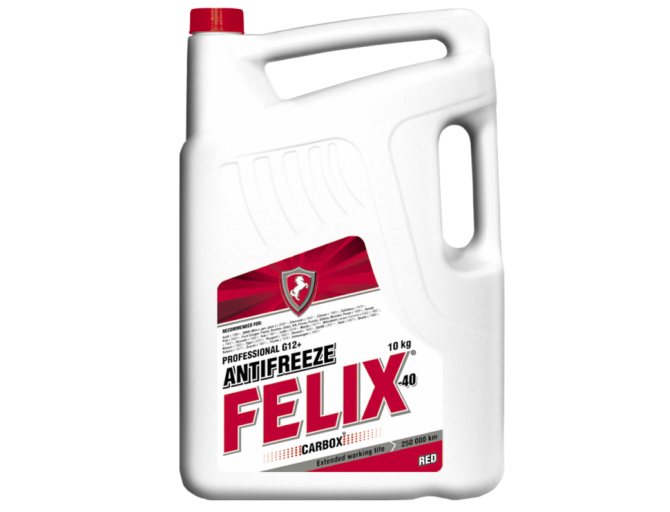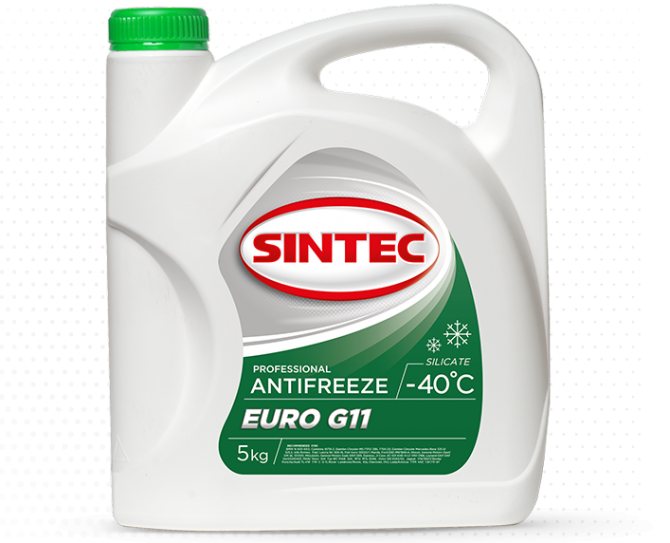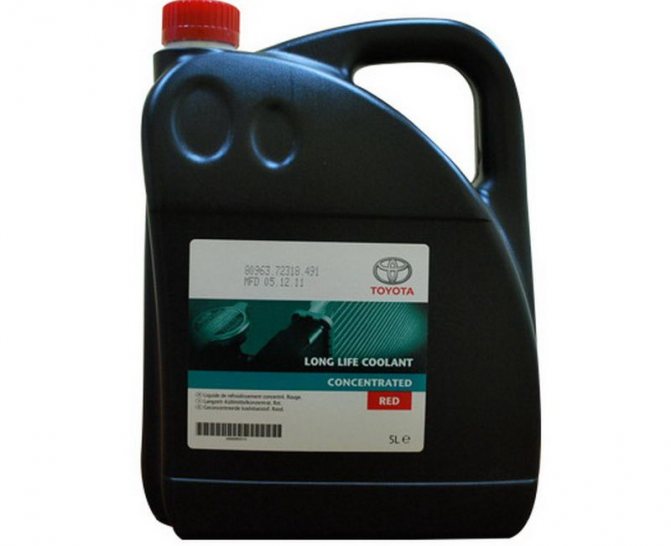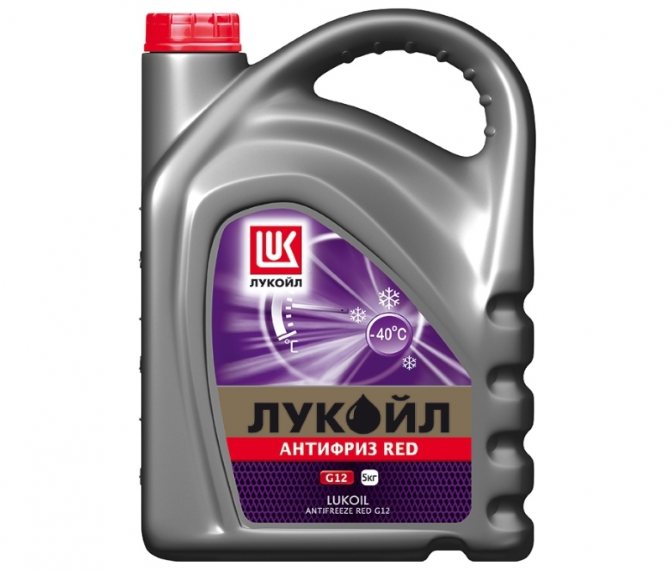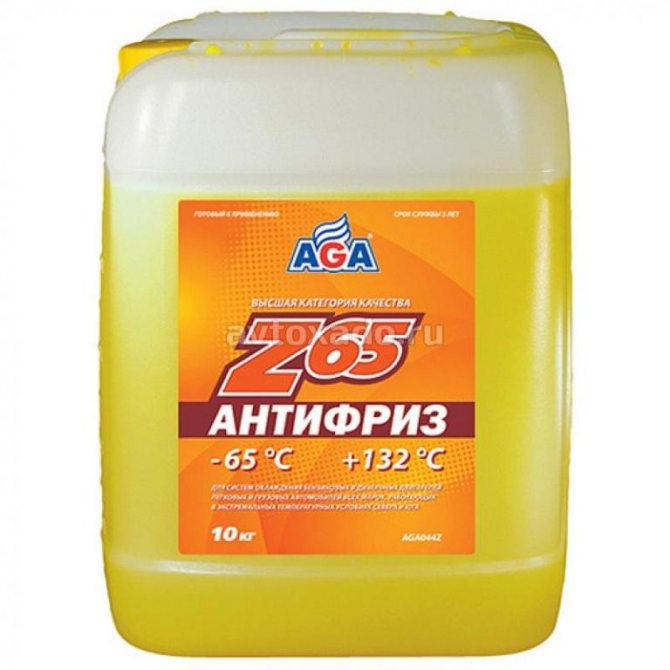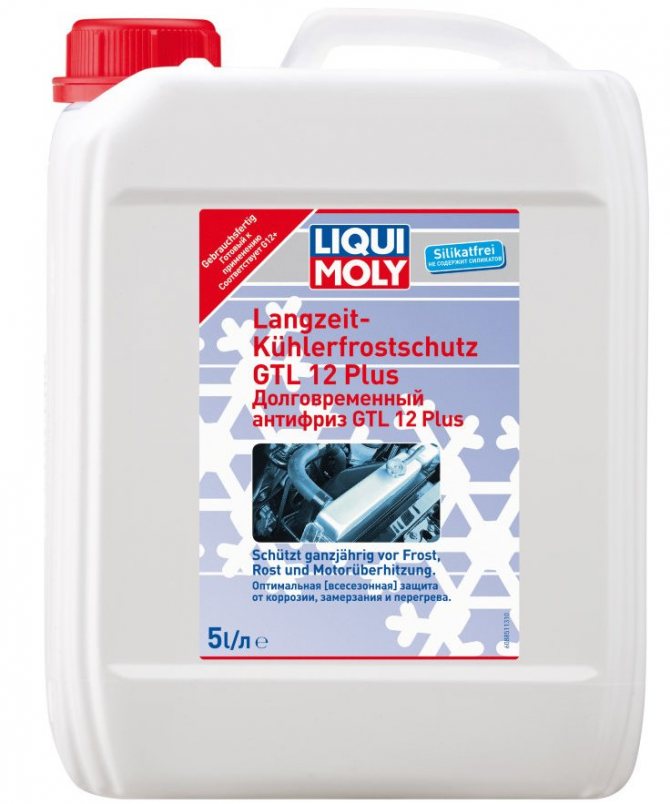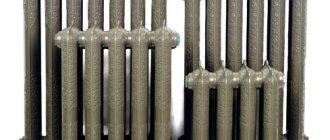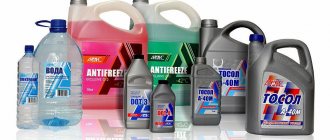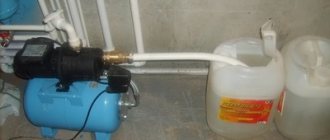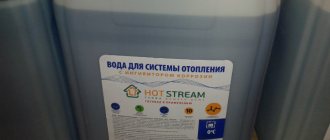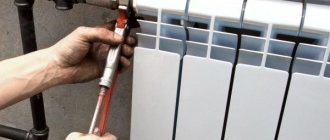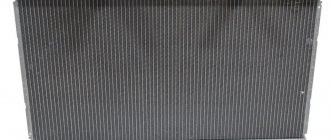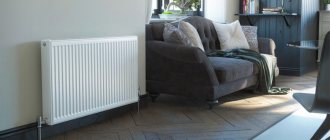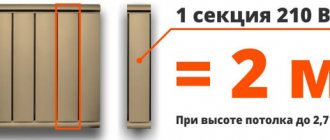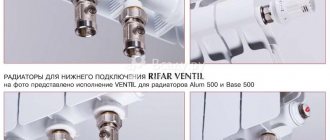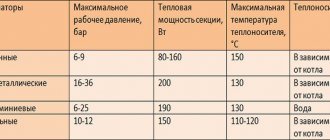Today, the market for antifreeze for car radiators is filled with products based on ethylene glycol. This substance has a number of positive qualities during use. The correct choice of means for the cooling system depends on its durability, as well as the operation of the engine.
Ethylene glycol based antifreeze has a low freezing point, which depends on the concentration of the substance. In this case, the liquid inside the cooling system begins to crystallize in the range from 0 to -70 ° C. When choosing a quality antifreeze, it is necessary to take into account the operating conditions of the machine. In the summer, it must cool the engine as efficiently as possible. In winter, the liquid should not freeze even in severe frosts.
Types of antifreeze
Today there are two main types of antifreeze - carbosilicate and silicate substances. The second type is used in old-style cars. The most famous representative of this class of funds is antifreeze. Silicate antifreezes have a number of disadvantages, so they are not used for foreign cars.
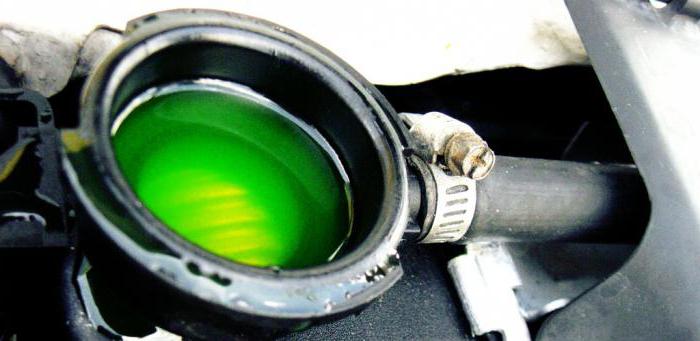
Silicate-free antifreeze based on ethylene glycol is preferable for foreign new cars. The additives that are part of the product, during the operation of the car, settle exclusively in areas where corrosion occurs. This became possible due to the inclusion of organic components in the composition of the product. In this case, the engine is fully cooled.
Silicate varieties based on ethylene glycol coat the entire inner surface of the tubes with inorganic components. They effectively prevent the formation of corrosion, but at the same time reduce the cooling capacity of the system.
What proportions to apply
It is important to understand that in order to lower the freezing point, it is necessary to increase the percentage of ethanol in the solution:
- With a decrease in the indicator to -10.6 degrees, ethyl alcohol should be present in an amount of at least 20.3%.
- When the temperature drops to -23.6 ᶷ degrees, the share of ethanol rises to 33.8%.
- At a temperature of -28.7 degrees, alcohol is added in the volume of 39% alcohol.
- At a temperature of -34 degrees - 46.3%.
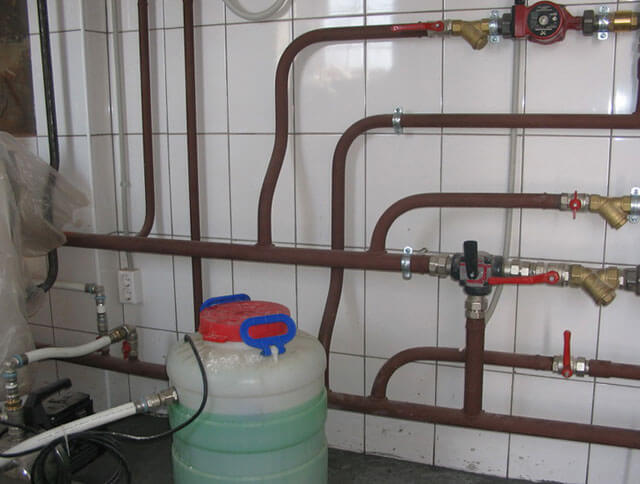

It should be taken into account that in one liter of 96% ethylene there is 960 ml of anhydrous alcohol. Therefore, to get a 33% solution, you need 96/33 = 2.9, that is, 2.9 liters of distilled water. That is, to make a 33% solution, one liter of ethyl alcohol and 2.9 liters of distilled water are needed. The antifreeze obtained in this way for heating can be safely poured into a circuit with aluminum radiators, because it will retain its fluidity even at -22 degrees of frost.
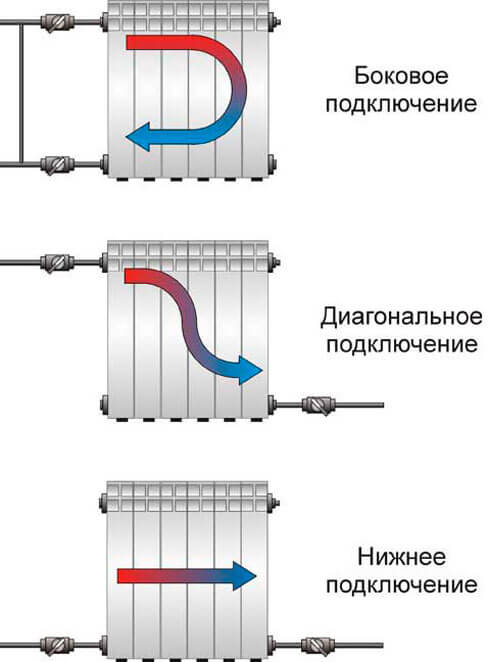

There are certain restrictions on the use of home-made and factory non-freezing coolants for bimetallic radiators:
- It is strictly forbidden to use antifreeze in heating circuits with electrolysis boilers.
- Antifreeze must not be used in open heating systems. We are talking primarily about toxic ethylene glycol compounds.
- It is not advisable to allow the temperature of the liquid to drop below -20 ᶷC. This significantly impairs the quality of the additives used, which provokes the formation of scale on the inner walls.
- In systems with antifreeze, it is forbidden to use linseed tow, planted on the paint. Under the influence of ethyl alcohol, it quickly decomposes, which leads to a depressurization of the connection. It is best to use Unipak plumbing paste in such cases.
- Non-freezing liquids have a destructive effect on galvanized elements.
Antifreeze composition
Ethylene glycol based antifreezes have a specific composition. Their main characteristics depend on this. In its pure form, ethylene glycol looks like an oily substance. Its freezing point is -13 ° C, and its boiling point is + 197 ° C. This substance is quite dense. Ethylene glycol is a strong food poison. This substance is toxic, especially after depleting its resource. Waste antifreeze based on ethylene glycol, the composition of which has been contaminated during operation with heavy metals, must be properly disposed of.
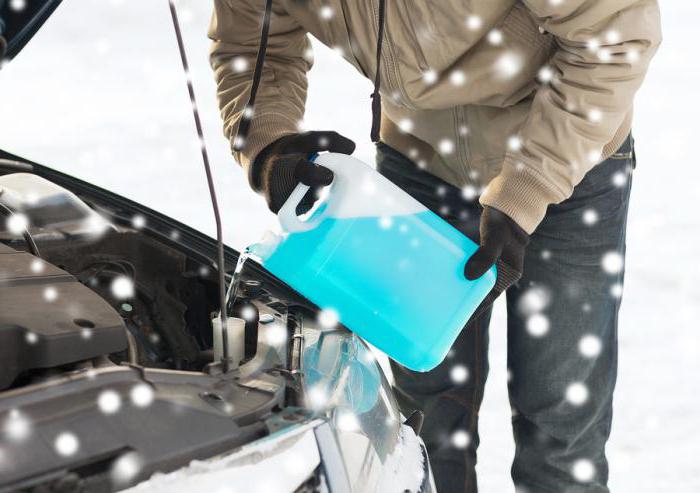

When mixed with water, the freezing point can drop significantly (down to -70 ° C with a water to ethylene glycol ratio of 1: 2). Organic and inorganic components can be used as additives. The first option is preferable. Corrosion inhibitors today come in 4 types: carboxylate, traditional, organic and hybrid. Due to the difference in the components that make up the antifreeze, different brands of these products must not be mixed. Otherwise, they will conflict with each other, reducing the effectiveness of the substance.
Rifar bimetal radiators
Aluminum radiators manufactured by Rifar, which have the most advanced performance among their counterparts, along with this, also have remarkable design features. The structure of the vertical channel and the wall with a thickness of 2.8 mm allow them to withstand pressures up to 20 atmospheres. This is their main difference from the brands of other aluminum radiators.
For a free flow of the coolant, they have a low hydraulic resistance. With such radiators, even non-freezing liquids can be used as a coolant. A yellow sticker is placed on such radiators, which lists the main types of coolants suitable for use. The service life of Rifar aluminum radiators is 10 to 25 years.
Bimetal radiators manufactured by Rifar are both sectional and monolithic. Now we will consider both types in order.
Structurally, such radiators are sections with a silicone gasket. This series is produced with center distances of 200, 300 and 500 mm. Moreover, the model with a distance of up to 500 mm is one of the most powerful models of the entire line.
We suggest that you familiarize yourself with the Temperature of the heating batteries in the apartment: the rate of heat supply
By design, the section of bimetallic radiators Rifar is a stainless steel pipe cast with an aluminum alloy, moreover, the casting took place under high pressure. Due to this, each section of such radiators is distinguished by its strength and excellent heat dissipation.
It should be noted that for bimetallic radiators Rifar it is allowed to use only special water according to paragraph 4.8 of CO 153-34.20.51 - 2003 from the "Rules for the technical operation of power plants and networks of the Russian Federation". The service life of the radiators of this model is from 10 to 25 years.
The design of monolithic bimetal radiators is arranged in such a way that its internal channels are welded together, and the coolant flows through them. Due to this, leaks in these radiators are practically excluded.
The advanced geometries of heat transfer surfaces made of aluminum alloy give Rifar bimetallic monolithic radiators excellent thermal conductivity. They maintain the room temperature comfortably and effectively.
Radiators last up to 25 years, are resistant to corrosion. They have no joints between the sections, plus a variety of types of coolants can be used with them, even antifreeze. Withstand pressure up to 100 atmospheres!
Because the heat flux of these radiators successfully combines both radiation and convective components; these radiators can be used both in medical and in children's institutions.
Summing up all of the above, we can come to the conclusion that aluminum radiators are good when used in private houses with an autonomous heating system, and bimetallic, on the contrary, in apartment buildings with a common heating system.
At the same time, it should also be noted that among all its analogues, the Rifar company, which produces both aluminum and bimetallic heating radiators, is the undoubted leader in its direction.
In the following articles, we will try in more detail to compare aluminum and bimetallic radiators with each other in terms of various performance indicators.
Antifreeze color
Initially, ethylene glycol-based antifreeze, the color of which can be seen in production, looks like a transparent substance. It only has a specific smell. Regardless of the brand, antifreeze is colorless. Dyes are added to identify its quality. Among drivers and auto mechanics, there is a classification of the quality of the product adopted by them, depending on its color. There are 3 groups of antifreeze.
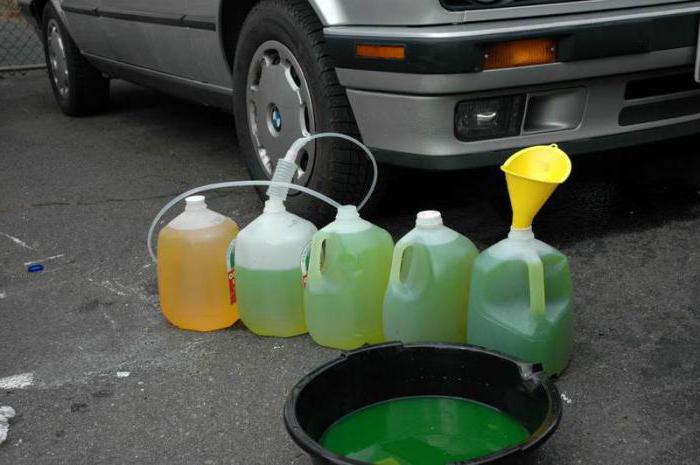

- The G11 class includes blue and green products. These are the cheapest consumables. They include ethylene glycol and silicate additives. The service life of such antifreezes is about 30 thousand km.
- The G12 class includes the red and pink type of substances. They are of higher quality. They contain ethylene glycol and organic additives. The service life of such vehicles can reach 150-200 thousand km. However, their cost is much higher.
- There is also a third class - G13. Its composition, in addition to the components listed in the previous section, includes propylene glycol. The color of such products is most often characterized by orange and yellow shades.
Cast radiators
In the cast method, the alloy is poured into molds, then silicon is added for strength. As a result, the radiator sections are hermetically sealed and can withstand pressures up to 16 bar. During the tests, the batteries are pressurized at 25 bar.
In addition, the overwhelming number of radiators have ribs in the form of petals, which play the role of convectors, for the position of the direction of the warm air flow into the heated room. Depending on the number of such channels, heat transfer and heat transfer will increase.
Cast aluminum radiators are divided into collapsible sections, so that the number of sections can be reduced or increased to increase or decrease the heat output. Thus, a broken section can be easily exchanged for a new one.
Marking system
Each antifreeze based on ethylene glycol for aluminum radiators, as well as loaded cooling systems, contains dyes. They do not affect the technical characteristics of the substance in any way. The choice of this or that color depends on the whim of the manufacturer. There is no universally accepted standard for labeling, as well as the addition of colorants.
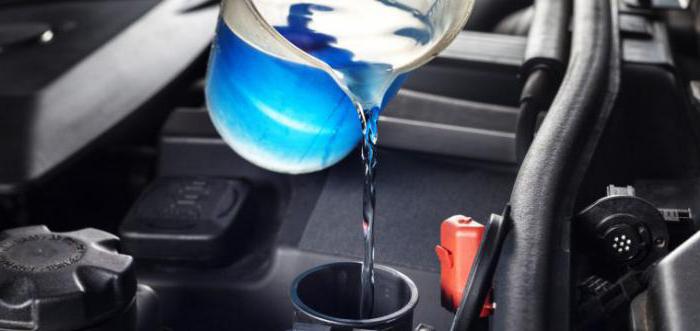

The markings presented above, which are most often taken into account by drivers and auto mechanics, were previously used in the production of German-made VW coolant antifreezes. These funds are very popular. However, even Volkswagen itself has already changed its specifications. Today, this renowned manufacturer produces 3 main classes of organic antifreeze. Their markings have the prefix G12 ++, G12 +++ and G13. Therefore, before buying a means for a cooling system, it is more correct to pay attention to the recommendations of the vehicle manufacturer, as well as the composition of the consumable itself. There is no single labeling for all antifreezes.
Pros and cons of aluminum radiators
The popularity of aluminum batteries is due to the following product advantages:
- Low weight. The weight of one section does not exceed 2 kg.
- Cheapness.Aluminum is a common metal that can be easily processed.
- Ease of installation and maintenance. Heat-resistant paint is used as a coating, which is easy to wash.
- Excellent decorative characteristics.
- High level of heat transfer. This is facilitated by additional thin-walled ribs. According to this indicator, aluminum radiators are almost 3 times superior to conventional cast-iron batteries.
- Compact dimensions.
- Fast response to temperature switching due to the small thermal "inertia" of aluminum.
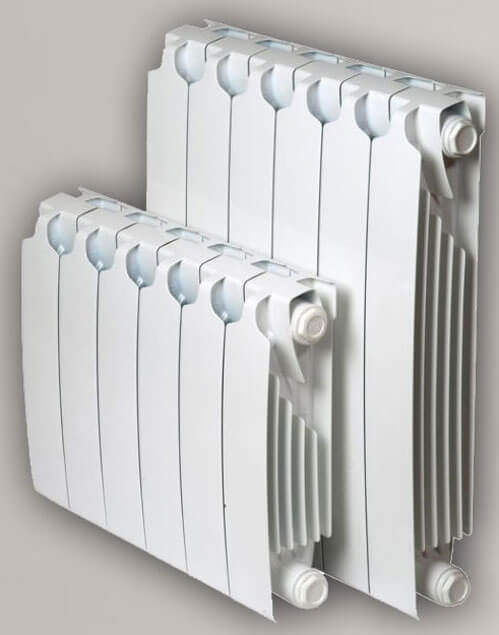

Weaknesses of aluminum radiators:
- They are very sensitive to the composition of the coolant (hardness, salinity). Poor water quality often causes equipment failure. Therefore, the decision of the question of which antifreeze is best for the radiator should be done with all seriousness.
- Corrosive tendency. Design, installation and repairs have to be done with great care.
- Working pressure limits.
- High probability of formation of air plugs due to the chemical activity of the metal with salts dissolved in water
The choice of coolant for aluminum radiators must be carried out very scrupulously.
The main properties of antifreeze
In the course of their operation, antifreezes exhibit a whole range of qualities. They are regulated by the standards and approvals of car manufacturers. It should be noted that ethylene glycol is a toxic substance. With the development of its resource, this indicator increases. There are rules on how to dispose of ethylene glycol based antifreeze waste. Various negative properties are attributed to them. Therefore, when replacing antifreeze, you must contact a special organization that will dispose of it correctly.
It is also important to consider the foaming properties of antifreezes. For domestic production means, this figure is 30 cm³, and for imported ones - 150 cm³. The wettability of antifreeze is 2 times higher than that of water. Therefore, they are able to seep even into very thin cracks. This explains their ability to flow out even in the presence of microcracks.
How to choose the right antifreeze
In order for the coolant to be really effective, you should know which antifreeze for aluminum radiators is optimal.
- Any type of antifreeze has a heat capacity lower than water, so more radiator sections will be required.
- The size of the battery must also be different. Since when heated, this coolant expands strongly, then the container for it is needed 50% more than for water.
- Make sure that the boiler in the heating system is suitable for operation with antifreeze.
- All joints must be checked and made sure that they have not broken the seal. In the event that linen fiber is used as additional gaskets in the heating network, it will have to be replaced with rubber counterparts.
- Antifreeze is not “friendly” with zinc, so all fittings and pipes should be checked so that there are no products made of this metal among them.
Non-freezing coolant does not need to be purchased from a store. It is easy enough to make it with your own hands from distilled water and 40% alcohol.
Review of popular brands
In our country, various brands of antifreeze based on ethylene glycol are used. The most popular are Felix, Alaska, Sintec, Long Life, Nord. They are characterized by an optimal ratio of price and quality.
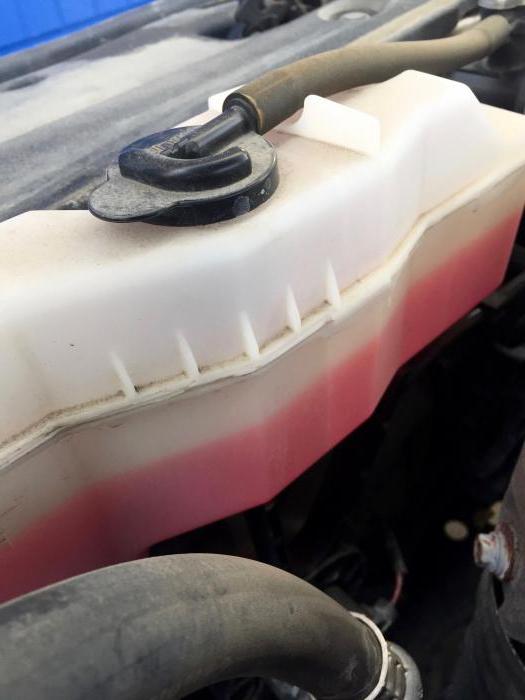

The presented antifreezes are designed for the harsh conditions of our climate. Also, the developed line of tools allows the driver to choose the required tool for the engine of his car. The presented agents effectively resist the formation of corrosion, and also provide good cooling properties of the radiator.
Products popular today in our country effectively protect engine systems from the formation of deposits, especially in the water pump, engine compartment and inlet channels.
Reviews of Sintec G12 antifreeze
Considering the options of which ethylene glycol-based antifreeze to choose for your car, first of all, you need to pay attention to such a tool as Sintec G12. This consumable contains a complex of organic additives. This product is intended for aluminum motors as well as other types of motors.
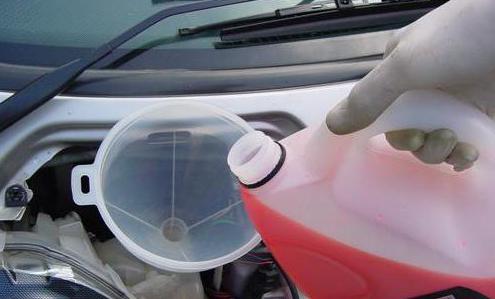

The crystallization temperature of antifreeze is -41 ° C. AvtoVAZ uses the presented product as the first pouring into the cooling system. It has a wide range of operating temperatures. The relatively low price also makes the product popular.
Special coolant
What he is not uncommon by and large
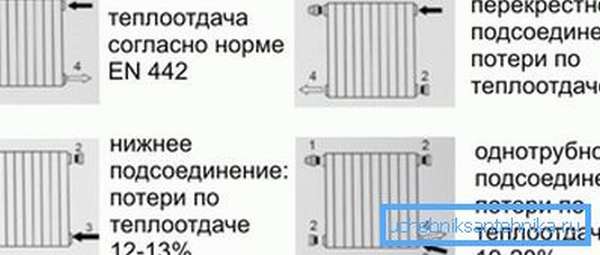

Image note. Depending on the method of supplying liquid to the batteries, as shown in the upper image, the degree of heat transfer may change.
- The most used and demanded heat carrier in the world for hot water heating systems is, of course, water., but its use leads to metal corrosion, and to the formation of scale and sludge, therefore, there is a need for periodic flushing and cleaning of the system. In addition, you do not have the opportunity to turn off the heating in the winter without draining the coolant along with this, since the water, of course, will freeze and what is called "defrosting the system" will happen - pipes and / or radiators burst - simply put, it comes out out of service.
- From all this, it is possible to conclude that it is fundamentally important not only to correctly calculate the power of the batteries for the room, but along with this, it is directed to use a coolant that does not freeze and enters into a chemical reaction with the metal... Such special fluids have one important property, which the instructions show and you need to pay attention to this when buying - in the event of a system leak, such a coolant does not affect the health of the human body in any way.
Antifreeze as a coolant
Note. Antifreeze, which is practically possible to translate into Russian from English, as "anti-freeze" is used to name liquids that do not freeze at low temperatures, as a non-specialized concept for such drugs. But in this case, there are special additives or additives - they serve as inhibitors of corrosion and mineral deposits.
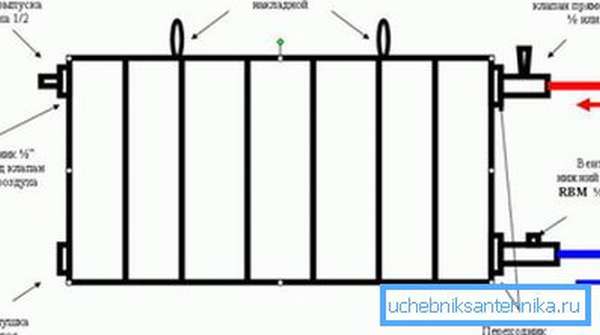

But no matter what, when choosing antifreeze for aluminum heating radiators, it is directed to choose exactly the composition that is intended for this purpose, since the manufacturer intends to provide for all the nuances of the intended use.
But there is no need to observe such a coolant as some kind of panacea - it, in full measure, naturally, has its drawbacks:
- Compared to water, its thermal capacity is 115% lower,
- It is unrealistic to start the system without a circulation pump, since antifreeze has a high viscosity, and circulation will be slowed down,
- When heated, the liquid expands very strongly,
- Its fluidity is 50% higher than the fluidity of water - this makes us pay special attention to welded (soldered) and threaded connections,
- When using ethylene glycol antifreezes, it is unrealistic to connect a warm water supply system, and only one circuit for heating, since they are poisonous.
Ethanol based antifreeze
Note. If you do not have the opportunity to buy a sufficient amount of similar mixtures for a heating system with aluminum radiators, you have the opportunity to make them yourself, but for this you will need distilled water and 40% ethanol (ethyl alcohol).
The high price of such coolants may not allow their use for their own autonomous system, and then forty percent ethyl alcohol and distilled water will be useful to you, which will allow you to independently prepare the desired liquid.
It is curious that such a composition is to some extent, in addition, better than the factory one, since its viscosity is much lower, but at the same time, it is in a sufficient proportion higher than that of water, and besides this, the fluidity is also significantly reduced, which makes it possible to lower the requirements to a certain extent. to welded (soldered) and threaded connections.
In addition, it should be directed to emphasize that when using such compositions, rubber seals (gaskets) are not damaged, which you will in any case use when installing the circuit.
Here it is also directed to pay attention to the fact that it is more optimal to use solid water in the manufacture of the composition - it, together with ethanol, does not allow the formation of scale on the inner surface of the walls of pipes and devices.
It goes without saying that a hard sludge under such conditions will be mandatory, but it is easily removed by flushing the system with running water. If the content of ethyl alcohol in the water does not exceed the 30% barrier, then alcohol evaporation will not happen - the liquid will behave exactly like plain, pure water.
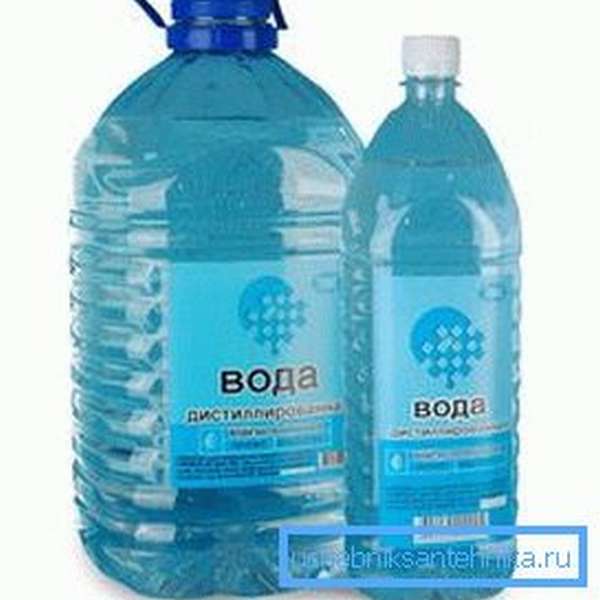

Due to its identification with plain water, the boiling point so that the coolant is approximately at the same level with water, therefore, if the liquid heats up to 85-90 °, then there is no abundant vapor release, since there is no boiling.
Finally, ethanol significantly reduces the thermal expansion of H2O, therefore, the risk of pipes and / or batteries bursting when defrosting the system is significantly reduced.
Proportions
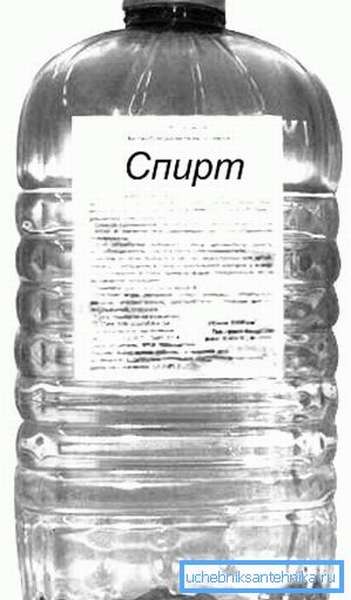

it should be taken into account that a certain decrease in temperature should be accompanied by an increase in the percentage of ethanol to distilled water, so if the thermometer drops to -10.6 ° C, then the content of ethyl alcohol in the total composition should be at least 20.3%.
If the temperature drops to -23.6 ° C, then 33.8% of ethanol is required, at a temperature of -28.7 ° C - 39% alcohol and at a temperature of -33.9 ° C - 46.3%, respectively.
But that's not all - one liter of 96% ethylene contains 960 ml of anhydrous alcohol, therefore, in order for you to have a 33% solution, you need to divide 96/33 = 2.9, in other words 2.9 liters of distilled water.
This means that to obtain a 33% solution, we need one liter of ethyl alcohol and 2.9 liters of distilled water. This composition will serve as an excellent coolant for a circuit with aluminum radiators, which will not freeze in addition at -22.5 ° C.
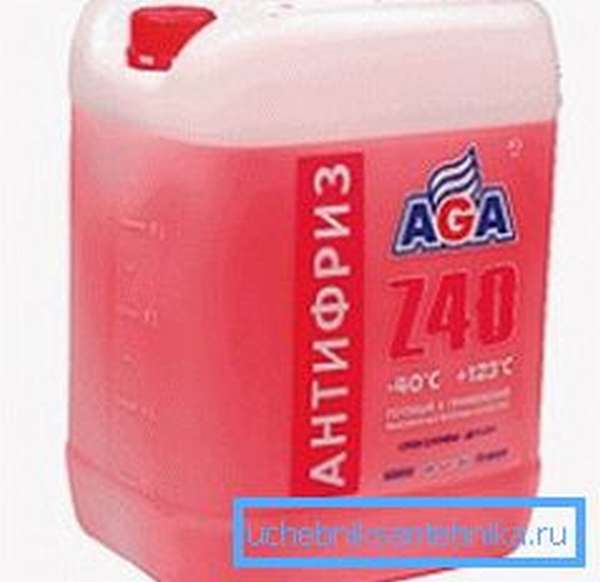

But this composition, in other words, antifreeze, the preparation of which we have outlined, and each, in certain cases, is strictly prohibited to use, based on this, you will need to take into account certain factors:
- The use of antifreeze in heating systems using electrolysis boilers is not permitted.
- The use of antifreeze in open heating systems where ethylene glycol is used is strictly not permitted, since it is poisonous.
- It is not recommended to lower the temperature beyond -20? C, since this underestimates the quality characteristics of the additives used - scale will appear on the inner side of the walls.
- When using such coolants, it is not recommended to use linseed tow, planted on paint, since ethyl alcohol easily corrodes it and the connection is depressurized. Plumbing paste "Unipak" is well suited for this.
- In addition, in such cases, galvanized pipes, nozzles and fittings cannot be used in the system.
Reviews of antifreeze "Felix"
The presented antifreeze is widely used in both cars and trucks. Moreover, this is true even for cars with a forced, loaded engine, turbocharging.This ethylene glycol based antifreeze is used in environments with significant ambient temperature fluctuations. The corrosion protection system acts selectively. It affects only those areas where traces of rust are detected.
The cost of the presented product is also relatively low. Multifunctionality and a wide range of applications make Felix antifreeze popular. However, the temperature of its crystallization is slightly higher than the level allowed by the technical regulations.
Some features of the coolant
- Aluminum conducts heat well and allows you to warm up the premises in a short time.
- Radiator channels are corrosion resistant when in contact with the coolant. This significantly extends the service life of bimetal radiators.
- In addition to protecting against corrosion, the enamel coating of the aluminum housing also gives the radiators a stylish look. Can be installed in any room.
- Due to the fact that bimetal radiators withstand high pressure and temperature well, they perfectly "get along" in any heating systems, especially in apartment buildings with central heating.
- Such radiators weigh little, they are easy to transport and install, moreover, independently.
It is important to remember that it is not recommended to use antifreeze in radiators where zinc is present.
It is not recommended to use antifreeze in aluminum heating circuits containing copper or brass. Its reaction with these metals can cause an electrolytic reaction.
When using antifreeze, it is worth using polymer seals instead of rubber as gaskets between radiator sections.
And also antifreeze must be used in circuits with more than one section, because this coolant has a low heat capacity, and therefore it needs more space.
When choosing a heat carrier, you should decide on the required volume of solution, the power of the boiler and the circulating pump, and you must also carefully check the general condition of the heating system before filling it.
The use of antifreeze in aluminum heating radiators has a number of positive aspects compared to other types of fillers. Thanks to the use of antifreeze, the heating circuit will last a long time and will consistently provide the required level of heat.
You can find out what is better to pour water or antifreeze into the heating system from the video below.
Reviews of antifreeze Totachi Long Life
The manufacturer of Totachi Long Life is a Japanese company. The product presented by her is intended for cooling systems of almost all gasoline or diesel engines. The product contains organic components. The operating temperatures at which it is allowed to operate the presented consumables comply with the technical regulations of the vehicle manufacturers. The advantage of Japanese-made antifreeze is a long service life. Its replacement is carried out every 5 years. The presented antifreeze based on ethylene glycol prolongs the life of all elements of the cooling system.
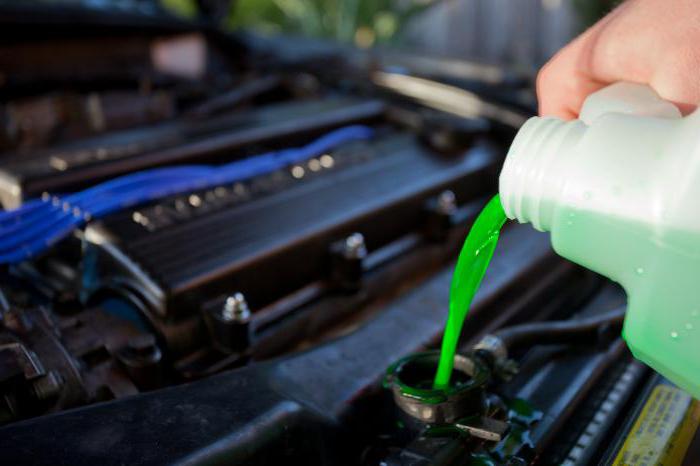

Some users note that the labels on the canister are in English and Japanese only. This causes some discomfort.
Having considered the composition, the main characteristics that ethylene glycol-based antifreeze has, you can choose the best option for your engine. Taking into account the feedback from users and experts about the most popular brands of consumables, it will not be difficult to purchase a quality product.
Outcomes
Discussion on the topic of whether it is possible to pour antifreeze into aluminum radiators brought quite specific answers. Responsibility for the choice of coolant lies entirely with the owners of the household. Considering the various fluid options, one should keep in mind one more feature of systems filled with antifreeze coolant.If the operating temperature regularly exceeds the limit of + 70ᶷ degrees, it is better to refrain from using non-freezing solutions, because because of their very high expansion due to the alcohol content. This is fraught with pipeline ruptures and damage to heating devices.

